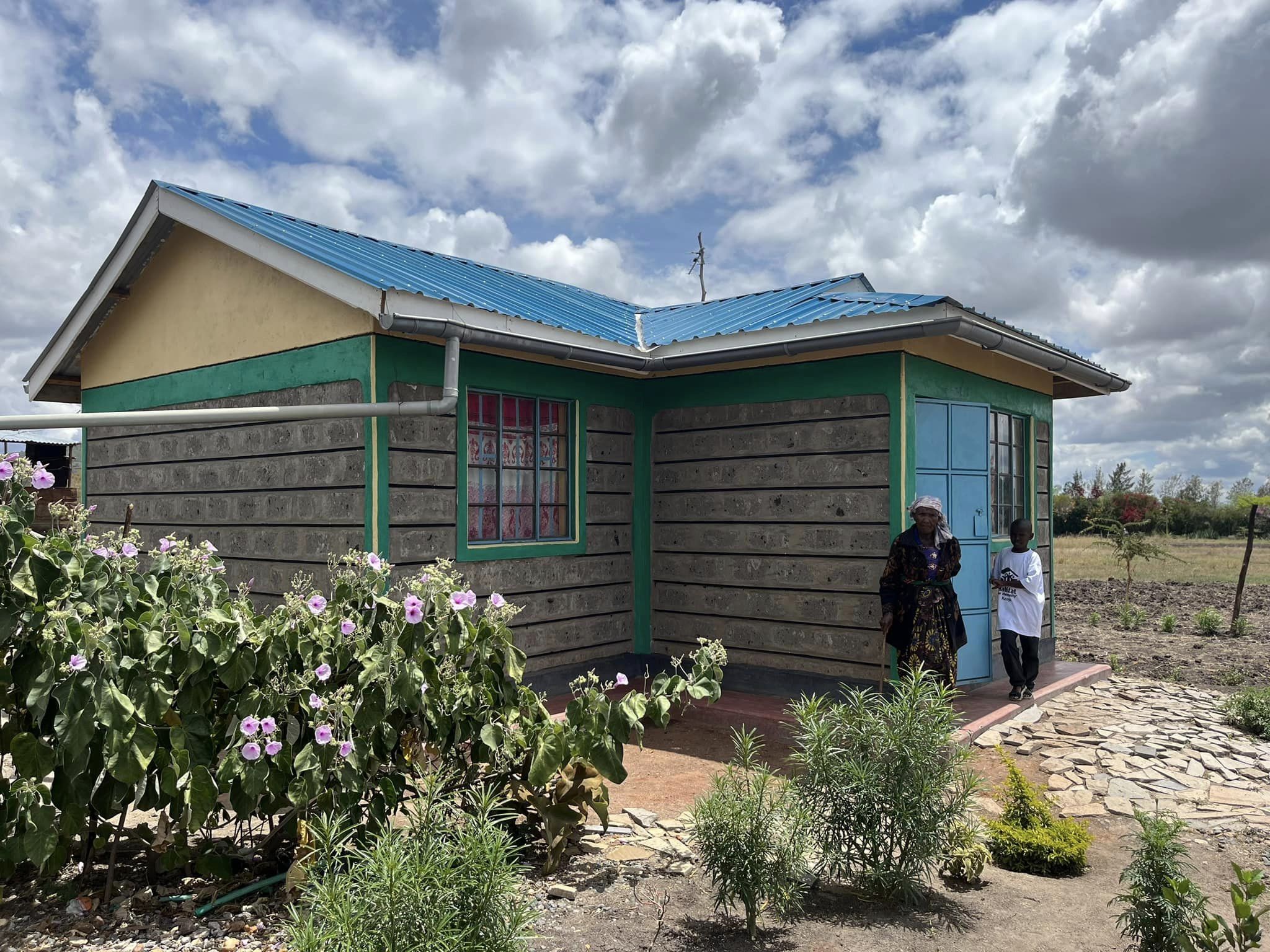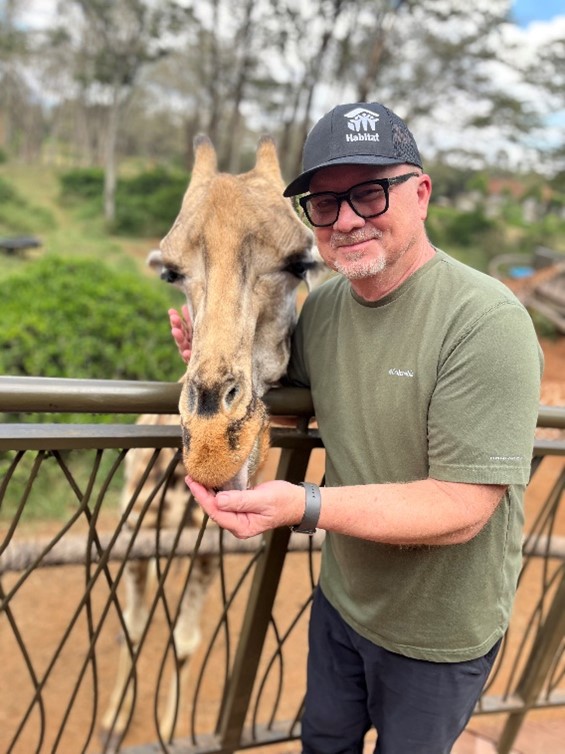By Ed Blake, CEO, Habitat for Humanity Greater Salt Lake Area
March 12, 2024
Did you know that every American Habitat for Humanity affiliate sponsors an international sister affiliate? Ours is Habitat for Humanity Kenya. Since launching in 1986, Habitat Salt Lake has supported the construction of 104 homes in Kenya, playing a pivotal role in transforming lives. Back then, the cost to build a home was $1,500; today it is $8,000. In 2023, we donated enough money to build five homes.
Last October, I had the opportunity to visit Kenya and participate in the construction of one of these homes in a village in Laikipia County, one of Kenya's 47 counties. This is a life-changing experience that I recommend to everyone I meet, and Habitat's Global Village volunteer program is a great way to get involved.
Nairobi
I flew into Kenya's capital, Nairobi, a modern and vibrant city of 2.7 million people, and stayed at a five-star caliber hotel that happened to be hosting the staff of King Charles, who was visiting at the time. Nairobi is a beautiful city; however, just on the outskirts lie the slums of Mukuru, a stark contrast between modern life and poverty.
 Nairobi, Kenya
Nairobi, Kenya  The slums of Mukuru
The slums of Mukuru
Kenyan Culture
Kenyans are beautiful people with diverse cultures from 44 tribes or communities. Song and dance are a common thread that promotes physical activity and fosters bonds across the generations. There are dances for specific age groups, rites of passage, ancestors, seasons of the year, and more. Some dances are meant to appease the spirits; others are for pure entertainment. No matter how impoverished the village, I’d experience people singing and dancing to celebrate and express their gratitude. I pondered why Kenyans seem so happy with so little, while here in America, we are often so unhappy despite having so much.
“In Africa, the village and its people are so rhythmically in tune that spontaneous song and dance are a large part of everyday life. One person will burst into song and others immediately join in, connecting the community. The songs may be well known, but oftentimes they are improvised call and response expressions of praise, gratitude, and joy.”
- Rosie Banchero, Artistic Creative Director, WOFA Dance SLC
Mealtime brings a defined social etiquette. In Laikipia, the villagers prepared a special meal for us, which is a significant investment on their part. Their daily diet consists of simple food, like rice, beans, and some vegetables. The meal they prepared for us was a rare feast, I was told.
Cleanliness is very important. At school, the children are taught to queue up at the wash station and scrub their hands as if they were going into surgery. In turn, the children have trained their parents to do the same.
Since we were the guests of honor, we were first to be served. Several women from the village served us with grand smiles while people from the village quietly waited their turn. I couldn’t conceal my broad smile as a woman walked by me with a plate so full it looked like one of those model volcanos for a school science project.
The elders were served next, then the parents, and finally, the children, who fidgeted in their chairs as they watched all these plates of food go by. I felt uneasy being served first because it seemed like an unearned entitlement. At my house, we serve the children first and then go up the line. However, I’ve learned not to impose my cultural ideologies onto those of other cultures. When in Rome....
Laikipia
From Nairobi, we traveled a couple of hours to Laikipia, an equatorial region that lies in the shadow of Mt. Kenya. It is known for being home to the last white Rhinoceros. Over the years, Salt Lake Valley Habitat has sponsored eight homes in Laikipia.
 A Habitat home sponsored by Salt Lake Valley Habitat.
A Habitat home sponsored by Salt Lake Valley Habitat.  The standard for household water.
The standard for household water.  Me with a Habitat Mother in front of her home.
Me with a Habitat Mother in front of her home.
Arriving at the village, I was welcomed by a large group of people who were singing and dancing. Among them were the five families who received homes we sponsored. I learned that one of the women is a single mother of six from the Turkana tribe. She escaped an abusive relationship and moved back to the village with her six children to be near her father. But all they had to live in was a round hut made from sticks and cow dung. She and her four daughters slept in the hut, and her two sons slept 10 feet away in their grandfather’s hut.
 Mud hut made of sticks and cow dung.
Mud hut made of sticks and cow dung.
Today, because of Habitat Kenya, she and her children live in a modest, decent brick home. Joined by four other women who reside in homes funded by Salt Lake Valley Habitat, she expressed her gratitude and shared her personal account of how the new home has transformed life and future prospects for her and her children.
 Habitat home recipients in Laikipia.
Habitat home recipients in Laikipia.
The Home Building Project
The project in Laikipia was to build a small two-room home for a single mother with four children who were living with her mother and four other family members (a total of 10 people) in a small shack.
 The Habitat partner family, grateful for their future home.
The Habitat partner family, grateful for their future home.  The old shack.
The old shack.
Our goal was to prep the foundation and pour the concrete. The day started out sunny, and we were all clean. But, by the end, it was drizzling and we were covered in our share of cement and red-dirt mud.
 The team of international volunteers
The team of international volunteers
 I'm ready to get messy!
I'm ready to get messy!
We worked all day and managed to complete the foundation and floor. To celebrate this feat, the community burst into song and dance. There could have been no better way to end the day.
The Giraffe Centre
What do you call a group of giraffes? A tower. Our trip to Kenya wouldn’t have been complete without a visit to the Giraffe Centre. There is nothing quite like standing next to one of these beautiful and majestic animals to put things into perspective. The sanctuary is dedicated to breeding the endangered Rothschild Giraffe. They release calves into the wild at two to three years old, when they are independent enough to survive. They've released more than 40 giraffes into safe game parks and conservancies across Kenya.
 My new best friend, Mr. Rothschild Giraffe.
My new best friend, Mr. Rothschild Giraffe.  Happy giraffe!
Happy giraffe!
To wrap up my tale, I will state emphatically that there is no better way to experience this world than to do it in the process of service to others. I hope that everyone can have an opportunity to visit and serve in another country, learn about their culture, and bring that experience back home to benefit our community.



